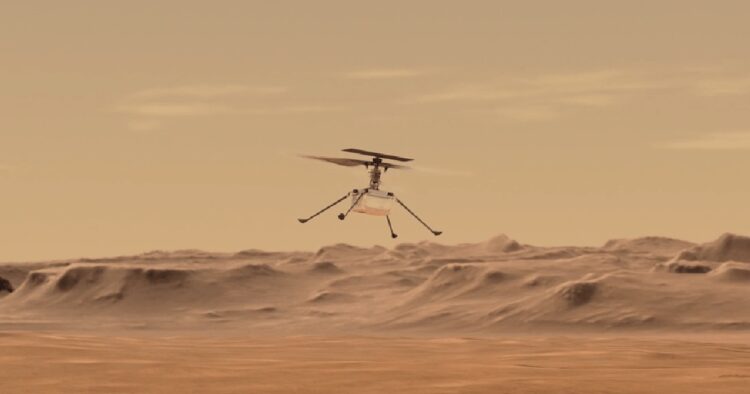NASA is exploring a groundbreaking idea to enhance its exploration of Mars by sending a unique aircraft named the Mars Aerial and Ground Intelligent Explorer, affectionately called “Maggie.” This solar-powered plane is designed for vertical takeoff and landing, with an impressive range of 179 km on a single charge. Moreover, Maggie is capable of cruising over 16,000 km during a Mars year, which is roughly 24 months on Earth.
Maggie’s mission will focus on three key scientific investigations on the Red Planet. Firstly, it aims to search for signs of water, a crucial element in understanding the potential for past or present life on Mars. Additionally, the aircraft will contribute to unraveling the mysteries surrounding Mars’ weak magnetic field and the elusive presence of methane, which could be a potential indicator of life.
Although Maggie’s development is in its early stages, NASA has shown its commitment by providing the project with its initial round of funding. While this does not guarantee Maggie’s flight on Mars, it signals NASA’s interest in advancing technology for planetary exploration.
While a specific timeline for Maggie’s inaugural flight is yet to be established, another flying marvel on Mars, NASA’s Ingenuity helicopter, has been making waves. Ingenuity achieved the historic milestone of being the first aircraft to accomplish powered, controlled flight on another planet – an achievement likened to the Wright Brothers’ groundbreaking moment.
Since its debut on April 19, 2021, Ingenuity has exceeded expectations by completing an impressive 71 flights, well beyond its initially planned technology demonstration of up to five flights. Over these flights, the helicopter has logged 128.3 minutes of flying time, covered a distance of 17 km, and reached altitudes as high as 24 meters.
As NASA continues to push the boundaries of exploration, Maggie and Ingenuity represent the agency’s commitment to utilizing innovative technology to unlock the mysteries of our neighboring planet, Mars.

















Comments